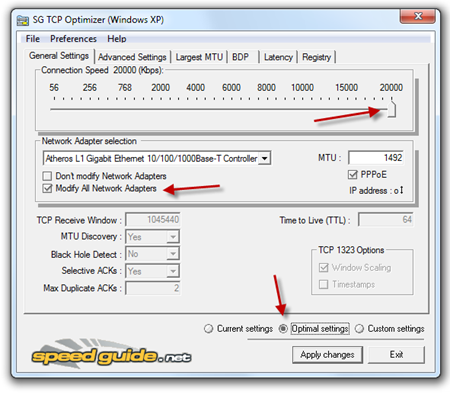Earlier this year, I upgraded my Verizon 15/5 business-class
FIOS to 35/35. While I had awesome downstream results, my upstream
always hovered around 6-10. I run my web server out of my house,
and also do a lot of VPN work with Microsoft, so upstream is really
important.
I first called Verizon support, and got annoyed at the wait. I
tweeted something, and a Verizon tech contacted me on twitter
(Sweet!). Verizon required me to run their optimizer (search for
verizon fios optimizer and it'll come up). I was nervous about
running it as no one could tell me exactly what it changes. My
experience with changes from broadband providers in the past has
not been great, as they assume all you use your PC for is to
directly connect to their broadband service. I finally caved and
ran it anyway. Unfortunately, the upstream increase was only 1 or 2
megabits; certainly not the 25-29 increase I was expecting to
see.
After some attempts with the first-level tech, she DM'd me
(which I got at the airport on my phone) and asked for my phone
number so she could talk with me. I was on the BWI bus from the
airport to the parking garage a few minutes later when she called
and arranged for a tech visit.
Tech Visit
The Verizon tech visited me today for a service call on this
issue. His first step was to have me run a Verizon speed test, and
then run the optimizer. Once I showed him that was done, he
immediately ran a tool he relies on: SG
TCP Optimizer. While it says it's for Windows XP, it worked
fine on my 32 and 64 bit Windows 7 machines.

When you run this tool, select the highest possible connection
speed that is still equal to or less than your required speed. In
this case, I have 35/35 service, so I chose the 20,000k (roughly
19mbps) option.
On one machine, that still didn't fix my upload speed. For that,
I ran a second utility on the download page: the Vista TCP/IP patch
(yes, I'm on Windows 7, but it still worked). That's just a command
file that makes a bunch of network updates. On the machine on which
I ran that, it got me up to 29/33, not perfect, but pretty
good.
Here's a table of what was required for each machine I
optimized. (I didn't optimize Melissa's laptop, the kid's game
laptop, my database server, mail server, or cnc machine)
| Machine |
Verizon Optimizer |
SG TCP Optimizer |
Vista TCP/IP
"Patch" |
Result |
| Dell 64bit Win7 Desktop |
Y |
Y |
N |
36/35 |
| Dell 64bit Win7 Tablet |
Y |
Y |
Y |
33/7 * 33/36 |
| Home-built 32bit Win7 Desktop |
Y |
Y |
Y |
29/35 * |
| IBM 345 Win2k8 Web Server |
N ** |
Y |
N |
35/35 |
* The two machines that required the Vista "patch" both had
issues with the Verizon speed optimizer. Both installed and ran it,
but the optimization was not detected by the speed test. However,
if I tried to run the optimizer again, it said it was already run.
I ran as admin as required, but no go. Strange. My dell
tablet still needs work, as it isn't hitting the speed it
needs to. I have no idea why that's the stubborn one, but it's also
the only machine I tried which also has a wireless connection.
[UPDATE: I again ran the SG Optimizer on the tablet, but
this time, did not check the option to modify all adapters
(thinking the wireless connection may throw it off). Rebooted
again, and now it gets 33/36]
** Which is good, as I couldn't get it to run on that machine
due to prohibitions on ActiveX controls in the browser. Even
running IE as admin, putting the Verizon site in the trusted zone,
and turning off the locked-down mode wouldn't let me do it.
Conclusion
At least for the higher network speeds, the Verizon optimizer
alone doesn't cut it. Unfortunately, the first-level techs aren't
supplied with the information required to help you move beyond that
(they do a remote test, tell you to run the optimizer, and then
schedule a service call if that fails)
So, before calling that tech to your door, run the utilities
above and see if they'll do it. If not, check around a bit on the
forums to see if anyone else has similar issues. After that,
arrange for a tech, as it is usually not an issue with the ONT, but
is an issue with the PC config.
